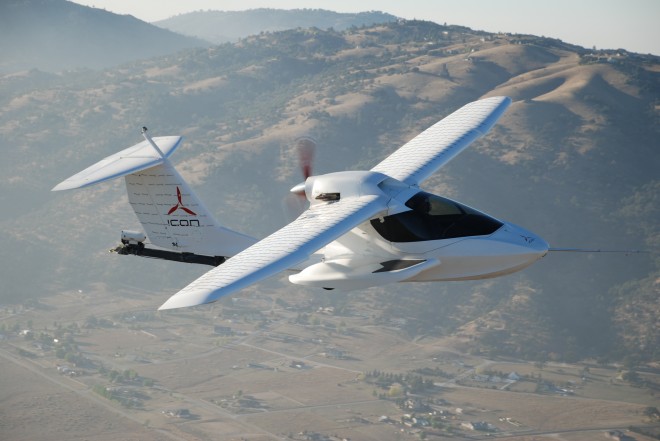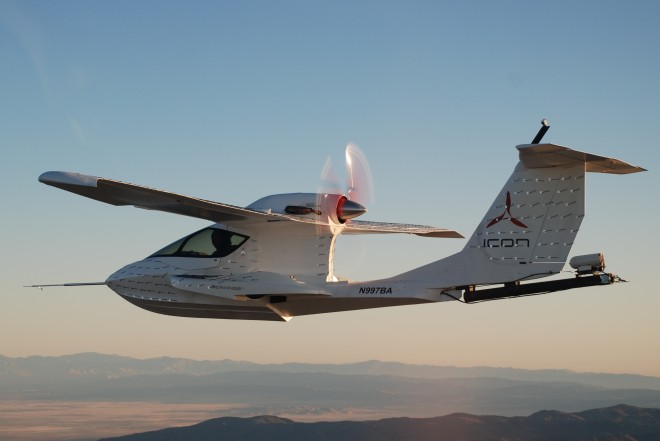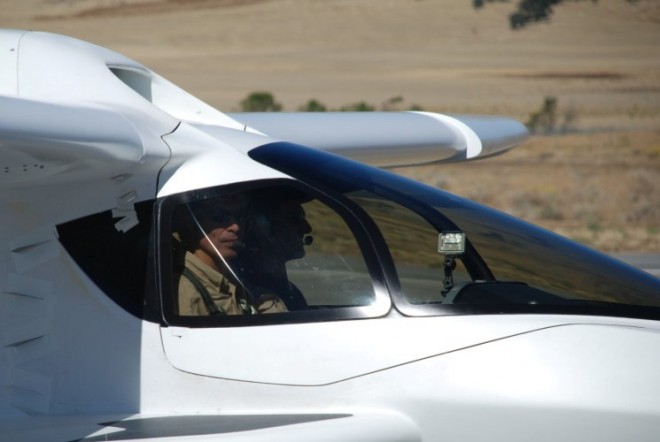- Joined
- 9 October 2009
- Messages
- 19,999
- Reaction score
- 10,521


The boom off of the back of the airplane contains a parachute and is commonly used in spin testing. The production A5 will have a parachute, but it will be integrated into the airframe. The small lines on the airplane are tufts of yarn that allow engineers to see how the air is flowing around the airframe.

The new wing cuff is visible on the leading edge of the A5 prototype.
[IMAGE CREDITS: Icon Aircraft/Wired.com]
